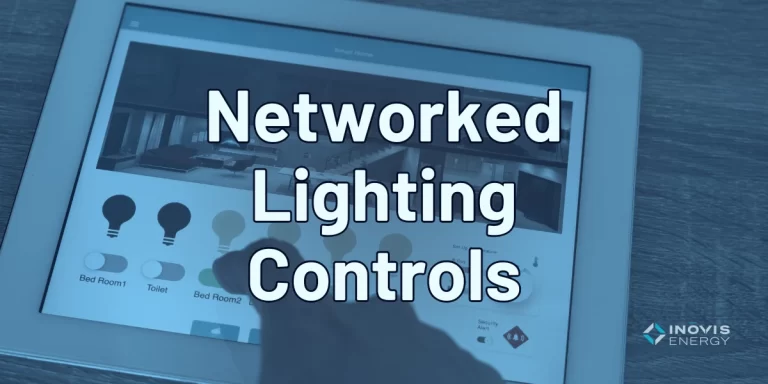Networked Lighting Controls for Commercial Buildings
Home » Solutions » Smart Controls » Networked Lighting Controls
Networked lighting controls (NLCs) offer the highest level of flexibility and energy savings in commercial lighting. These intelligent systems combine sensors, software, and fixture-level controls to automate lighting based on real-world conditions—like occupancy, daylight, or time-of-day.
Table of Contents

What Are Networked Lighting Controls?
Networked lighting controls (also called Tier 3 lighting controls) are smart systems that connect multiple lighting components across a building or campus. These systems go beyond simple occupancy sensors or wall timers. Instead, they use real-time data and centralized software to adjust lighting based on occupancy, daylight, schedules, zones, and even user behavior.
NLCs include:
-
Fixture-level sensors and wireless communication
-
Occupancy and daylight harvesting features
-
Zoning and task tuning for different spaces
-
Cloud-connected dashboards for remote monitoring
-
Integration with BMS or HVAC controls
Networked systems are eligible for the highest levels of utility incentives, especially in Massachusetts and other progressive energy markets. They are ideal for schools, warehouses, offices, and parking facilities.
Why Upgrade to NLCs?
Key Benefits:
-
Reduce lighting energy use by 30–70%
-
Enable remote management and system-wide visibility
-
Qualify for maximum utility rebates (Tier 3 level)
-
Customize light levels by space or task
-
Improve occupant comfort and productivity
-
Integrate with HVAC, security, or building management systems
-
Reduce maintenance through fault detection and auto-reporting
How Networked Lighting Control Systems Work
NLC systems typically include:
-
Sensors mounted on or near fixtures to detect motion and light levels
-
Wireless communication (Bluetooth Mesh, Zigbee, Wi-Fi, or proprietary) to connect devices
-
A centralized controller or cloud platform for scheduling, zoning, and monitoring
-
Scene-setting and manual overrides when needed
These systems can be configured to respond to:
-
Time of day
-
Occupancy
-
Daylight availability
-
User-defined scenes
-
Preset utility demand response events
How NLCs Save Energy
NLCs reduce energy by eliminating over-lighting and automating off/on behavior. They:
-
Turn lights off in unoccupied spaces
-
Dim lighting based on daylight availability
-
Lower light levels after hours via scheduling
-
Fine-tune output to meet—but not exceed—lighting needs
-
Reduce heat load, indirectly lowering HVAC costs
Savings are compounded over time and often exceed 50%, especially in office and warehouse environments.
Industries That Benefit from Networked Lighting Controls
Commercial offices, schools, warehouses, healthcare facilities, parking garages, manufacturing plants—anywhere lights are often left on without reason.
Our Installation Process
-
Site Assessment – Evaluate existing lighting and building systems
-
System Design – Define zones, schedules, sensors, and integration needs
-
Rebate Planning – Match system to utility Tier 3 incentives (e.g., Mass Save)
-
Installation – Deploy sensors, fixtures (if needed), and controls
-
Commissioning – Configure system rules, dashboards, and reporting
-
Training & Support – Educate facility staff and offer ongoing support
Financing Options for NLC Projects
Networked lighting controls qualify for the highest prescriptive incentives available in most states. Inovis handles:
-
Rebate applications and paperwork
-
Vendor selection and compatibility verification
-
Direct incentive application to reduce out-of-pocket cost
Bundled options with lighting retrofits or HVAC upgrades can result in no-upfront-cost or cash-flow-positive implementations.
Modernize Your Lighting with Intelligent Controls
Networked lighting controls are one of the smartest energy efficiency upgrades available. Inovis helps you design and install NLC systems that meet your needs—and qualify for maximum incentives.
